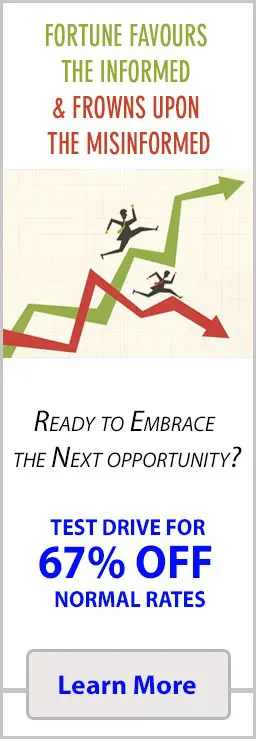
Overconfidence and Speculative Bubbles: Why Markets Keep Crashing
Mar 26, 2025
The most dangerous word in investing has always been “this time is different.” Throughout market history, these four words have preceded catastrophic wealth destruction with such reliability that they should trigger immediate alarm in any rational investor. Yet each generation, blinded by overconfidence and seduced by speculative euphoria, convinces itself that ancient market laws have been suspended—that trees can indeed grow to the sky. Make no mistake: market bubbles aren’t random accidents but predictable manifestations of human psychology operating at scale, where collective delusion transforms rational individuals into components of a manic herd. The current market cycle—characterized by meme stocks, crypto manias, and AI exuberance—isn’t breaking new psychological ground but rather following the exact emotional template that has separated investors from their capital for centuries. Understanding why markets keep crashing through the lens of overconfidence and speculative bubbles doesn’t merely provide academic insight—it offers the rare opportunity to position yourself on the profitable side of others’ inevitable psychological failures.
The devastating truth for most investors is that their psychology represents their greatest enemy. While external events trigger market crashes, the true damage occurs through internal decision-making—the panic selling, the refusal to cut losses, the inability to act when genuine opportunities emerge. This systematic self-sabotage stems from both individual psychological vulnerabilities and collective delusions that transform rational actors into components of financially self-destructive mobs.
The Anatomy of Overconfidence: Why Smart People Make Stupid Market Decisions
Overconfidence represents the foundational psychological flaw driving speculative bubbles and subsequent crashes. This dangerously seductive bias manifests not through conscious arrogance but through subtle cognitive distortions that bypass rational defenses, afflicting even highly educated investors with superior intellect. Understanding these specific mechanisms reveals why overconfidence proves so universally destructive yet extraordinarily difficult to self-detect.
At its core, the overconfidence bias operates through illusory superiority—our brain’s persistent tendency to overestimate our own abilities relative to others. Study after study demonstrates this effect: 93% of American drivers believe they rank in the top 50% for driving skill, 87% of MBA students rate their academic performance above median, and perhaps most tellingly, 74% of professional fund managers believe they deliver above-average performance despite mathematical impossibility. This systematic self-delusion creates the psychological foundation for dangerous market behaviour, convincing investors they possess unique insight or analytical advantages despite overwhelming evidence to the contrary.
This general overconfidence sharpens into specific market danger through the illusion of control—our tendency to believe we can influence outcomes that are substantially or entirely determined by external factors. When investors convince themselves they can predict market directions, time sector rotations, or identify “can’t miss” opportunities, they’re not demonstrating superior analysis but succumbing to this psychological vulnerability. The scientific evidence proves devastating: studies using brain imaging technology show that financial decisions made under the illusion of control activate entirely different neural pathways than genuine rational analysis, essentially bypassing critical thinking circuits in favor of reward-anticipation systems.
Historical Bubbles: The Recurring Psychology of Financial Insanity
The specific psychological patterns driving overconfidence and speculative bubbles appear with remarkable consistency throughout financial history, creating an effective playbook for identifying dangerous market conditions. These historical episodes demonstrate that human psychology remains unchanged despite technological advancement—operating according to predictable patterns that create both danger and opportunity.
The 1636 Dutch Tulip Mania—often cited as history’s first documented speculative bubble—demonstrates how overconfidence transforms reasonable initial insights into collective delusion. While early tulip investors correctly identified genuine scarcity value in certain bulb varieties, this reasonable assessment gradually mutated into absurdity as prices lost all connection to underlying utility. At the mania’s peak, single tulip bulbs traded for amounts equivalent to luxury homes, with price increases exceeding 1,000% in six months before collapsing by over 99% in mere weeks. What began as rational speculation descended into pure psychological contagion—a pattern repeated endlessly in subsequent centuries.
More recently, the 2000 dot-com bubble showcased how easily technological innovation can be hijacked by overconfidence and speculative excess. Early internet investors correctly identified genuine transformative potential, but reasonable forecasts gradually morphed into delusional projections as collective psychology overwhelmed rational analysis. Companies with negligible revenue achieved multi-billion-dollar valuations based on metrics created specifically to justify otherwise indefensible prices. When Pets.com could raise $82.5 million in an IPO before bankrupting nine months later, the market had clearly abandoned reality for psychological comfort—precisely the condition that precedes every major crash.
The 2006-2008 housing bubble demonstrates another critical aspect of market psychology: the ability of overconfidence to infiltrate supposedly sophisticated institutional structures. Rather than containing individual psychological excess, these institutions actually amplified it through misaligned incentives and collective delusion. Financial engineers at supposedly risk-aware institutions convinced themselves that complex financial instruments had miraculously eliminated fundamental risk, transforming junk mortgages into AAA-rated securities through mathematical alchemy. This institutional overconfidence proved infinitely more dangerous than individual speculation, creating systemic collapse rather than isolated losses when reality inevitably reasserted itself.
The Anatomy of the Crash: From Euphoria to Despair
Market crashes don’t occur randomly but follow remarkably consistent psychological progressions from peak overconfidence through disbelief, panic, and eventual capitulation. Understanding this emotional sequence creates both protective awareness and strategic opportunity, allowing thoughtful investors to identify dangerous market conditions and potentially profitable dislocations with greater reliability.
The transition from speculative bubble to market crash typically begins with the “plateau of complacency”—a subtle but crucial psychological shift where market enthusiasm remains intense, but price advances become increasingly difficult despite growing promotion. This phase represents the exhaustion of new capital entering the speculative asset, creating distribution patterns where sophisticated investors quietly transfer overvalued assets to less experienced buyers still captivated by narrative rather than valuation. During the 2021 cryptocurrency peak, this pattern appeared starkly in on-chain data, showing whale addresses systematically reducing positions while retail addresses increased exposure—a warning sign visible only to those tracking actual capital flows rather than media narratives.
As initial price declines appear, the denial phase begins—characterized by aggressive rejection of contrary evidence and declarations that temporary weakness represents a “buying opportunity.” This period features increasingly desperate attempts to maintain psychological comfort through rationalization, with investors creating elaborate explanations for price action that threatens their fundamental assumptions. During the 2022 crypto collapse, blockchain projects steadily declined for months while promoters insisted corrections were “healthy” and “necessary” before eventual recovery—convincing many investors to maintain or even increase exposure precisely when risk reduction was most warranted.
The panic phase arrives when psychological defenses finally collapse under the weight of undeniable evidence, transforming previous overconfidence into equally extreme pessimism. This emotional capitulation typically creates the most violent price movements as forced selling, margin calls, and pure psychological surrender overwhelm any rational price discovery process. These moments of maximum fear—when previously euphoric assets decline 80-90% from peaks amid declarations the entire sector represents a “failed experiment”—often create extraordinary opportunity for disciplined investors with capital preserved through previous skepticism.
Strategic Positioning: Harvesting Opportunity from Others’ Overconfidence
While overconfidence and speculative bubbles create enormous destruction, they simultaneously generate extraordinary opportunities for investors who maintain psychological discipline. Understanding specific strategies for harvesting value from others’ inevitable psychological mistakes transforms market crashes from threats into potential sources of outsized returns.
The foundation of bubble-harvesting strategy lies in deliberate countercyclical positioning—systematically reducing exposure during periods of maximum optimism while deploying capital during periods of maximum pessimism. This approach directly contradicts natural psychological tendencies, requiring mechanical decision frameworks that operate independently of emotional comfort. Specific implementation might include systematic valuation-based rebalancing, where portfolio allocations shift based on objective metrics like cyclically adjusted price-to-earnings ratios, market-cap-to-GDP ratios, or similar valuation indicators that typically reach historical extremes during bubble periods.
Options strategies provide particularly powerful mechanisms for monetizing psychological extremes. During periods of peak overconfidence, selling covered calls against overvalued positions allows systematic harvesting of the psychological premium others willingly pay for upside exposure. Conversely, during crash phases, when fear dominates, selling cash-secured puts on quality companies at significant discounts to already-depressed prices creates a dual benefit: immediate premium income plus potential share acquisition at prices reflecting maximum pessimism. During the March 2020 COVID crash, options were put on quality companies, briefly offering premiums exceeding 15% for three-month durations at strike prices already 30% below pre-crash levels—extraordinary compensation for providing liquidity during others’ psychological distress.
For investors with longer time horizons, the “averaging into fear” strategy provides a powerful psychological advantage by transforming market crashes from threats into anticipated opportunities. By maintaining substantial cash reserves during bubble periods (often 20-30% of portfolios) and systematically deploying this capital in tranches during subsequent crashes, investors create mechanical frameworks for buying assets from distressed sellers at prices reflecting psychological surrender rather than fundamental value. This approach requires substantial emotional discipline but has historically generated superior risk-adjusted returns across virtually all major market cycles.
Psychological Immunization: Protecting Yourself from Yourself
Beyond specific investment tactics, sustainable success requires developing psychological immunization against the overconfidence and emotional contagion that drives speculative bubbles. These mental frameworks and practices don’t eliminate emotion but rather create structures allowing effective decision-making despite inevitable emotional pressures.
The foundation of psychological immunization lies in deliberate exposure to contrary opinions—systematically seeking viewpoints that challenge rather than confirm existing beliefs. During bubble periods, this means actively consuming bearish perspectives even when they create emotional discomfort. Practically, this might involve following analysts with different investment philosophies, regularly reading publications with contrarian viewpoints, or joining investment communities that encourage respectful debate rather than echo-chamber reinforcement. This controlled exposure to cognitive dissonance builds psychological muscles that prove essential when market consensus proves catastrophically wrong.
Decision journaling provides another powerful immunization technique by creating objective record of investment thought processes that prevents hindsight bias and facilitates genuine learning. By documenting investment decisions, including both analytical factors and emotional states at time of execution, investors create valuable feedback mechanisms that illuminate psychological vulnerabilities. Reviewing these journals during different market phases reveals patterns of error—particularly how emotion influences decision quality—creating foundation for legitimate improvement rather than self-deception.
The Future of Bubbles: New Technologies, Same Psychology
While technological innovation continues to accelerate, the psychological patterns driving overconfidence and speculative bubbles remain remarkably constant. Understanding how these timeless psychological vulnerabilities manifest through new technological vectors provides essential preparation for navigating future market cycles with strategic clarity.
Artificial intelligence represents the latest technological frontier vulnerable to bubble psychology, with current market dynamics showing familiar patterns of overconfidence and speculative excess. The transition from genuine breakthrough (large language models demonstrating remarkable capabilities) to speculative mania (companies adding “AI” to names and seeing stock prices double overnight) follows precisely the template established in previous technological bubbles. Valuations increasingly reflect narrative rather than demonstrable economics, with companies commanding massive premiums based on theoretical future advantages rather than current capabilities or revenue generation.
The overconfidence driving speculative bubbles represents not a historical curiosity but a permanent feature of market psychology—continuously adapting to new technological and social contexts while maintaining remarkably consistent underlying patterns. By understanding both the timeless psychological vulnerabilities and their contemporary manifestations, thoughtful investors transform predictable market crashes from threats into opportunities—positioning themselves to benefit from the inevitable psychological failures of others. In markets perpetually cycling between greed and fear, the greatest advantage belongs not to those with superior information but to those with superior self-awareness—those rare individuals capable of recognizing and countering the universal psychological tendencies that have separated investors from their capital for centuries.










